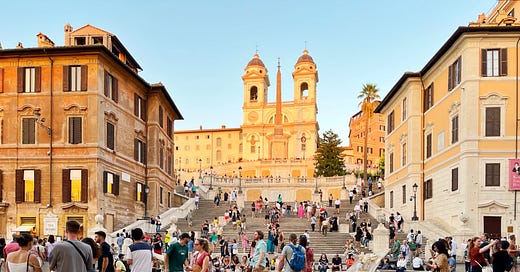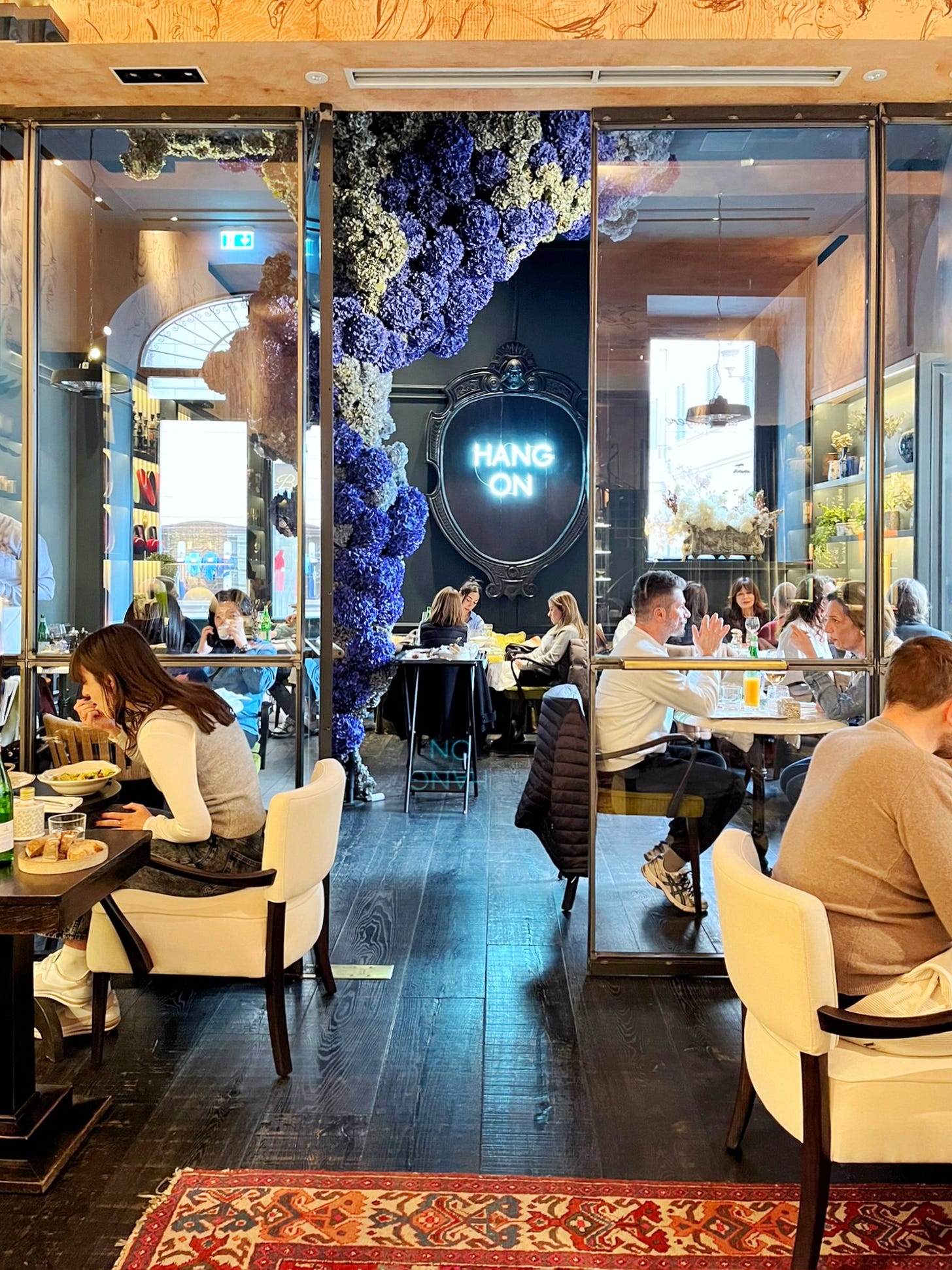Welcome to the New Roman Times’ neighborhood guide series! Every now and then, I’ll spotlight a specific neighborhood that I think is worth a deeper exploration for paid subscribers. Have a neighborhood you’d like a guide to? Email newromantimes@substack.com or leave a comment here!
One of Rome’s most famous landmarks, the Spanish Steps have been a gathering place for centuries. Built between 1723 and 1725 to connect the Trinità dei Monti Church at the summit with Via dei Condotti below, the staircase was designed by an Italian and funded by a French diplomat but named for the Spanish Embassy to the Holy See, which occupies the piazza.
At the bottom is the Barcaccia fountain believed to be designed by Pietro Bernini, father of the more famous Gian Lorenzo Bernini. During the 18th century, the area became known as the “English Ghetto” because it was popular among English aristocrats and romantic poets visiting Rome on the Grand Tour. You can still find traces of their influence today.
Nowadays, the Spanish Steps and surrounding area are best known as a hub for designer stores. Armani, Dolce & Gabbana, Prada, Fendi, Gucci, Valentino—just about every big name brand has a shop in the neighborhood. Via dei Condotti in particular is lined with them, but if you ask me, you’ve got to get off the main thoroughfares and explore the side streets in order to find the neighborhood’s charms.
The Spanish Steps are conveniently located between Piazza del Popolo and the Trevi Fountain and are well connected to the rest of the city by metro. In fact, the Spagna stop on line A was recently renovated with a sleek new design.
I tend to spend a lot of time in this area because of its convenient location and I’ve found some true gems here over the years. This year, I updated the chapter of Fodor’s Rome that covers this neighborhood. Spring is a great time to be there, as the steps are lined with azaleas from mid-April through mid-May. Here are my favorite places to eat and drink, things to do, places to shop, and hotels in the area.
Where to Eat
There are a few historic cafés in this neighborhood that are worth visiting. Antico Caffè Greco is pure old world splendor, with red damask walls, marble tables, and gold-framed paintings. I love to stop by for a quick espresso and to soak up the atmosphere. Another place with a fabulous atmosphere is Canova Tadolini on Via del Babuino, which was once the studio of sculptor Antonio Canova and his disciple Adamo Tadolini. The interiors are filled with larger-than-life plaster casts of their sculptures, making it a memorable place for a coffee or an aperitivo.
Keep reading with a 7-day free trial
Subscribe to The New Roman Times to keep reading this post and get 7 days of free access to the full post archives.






